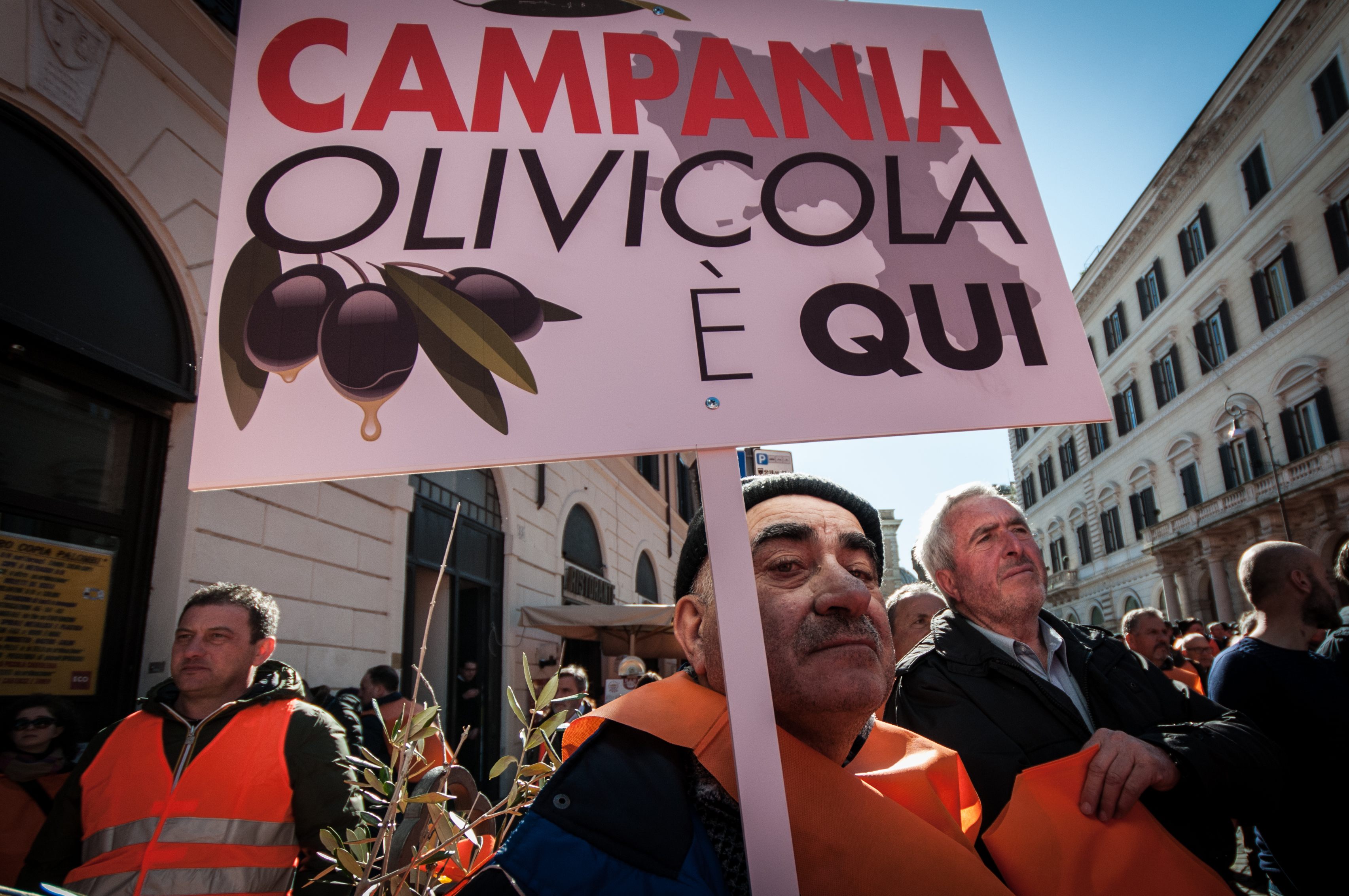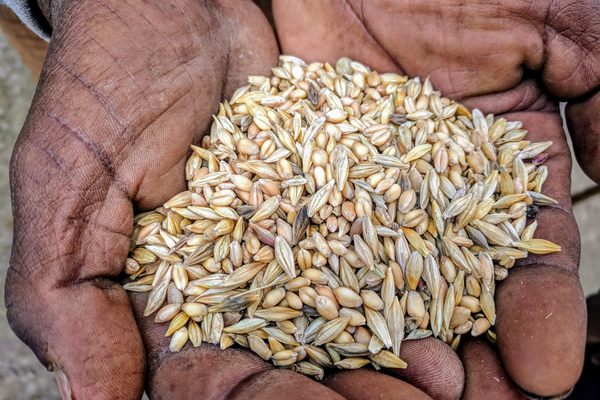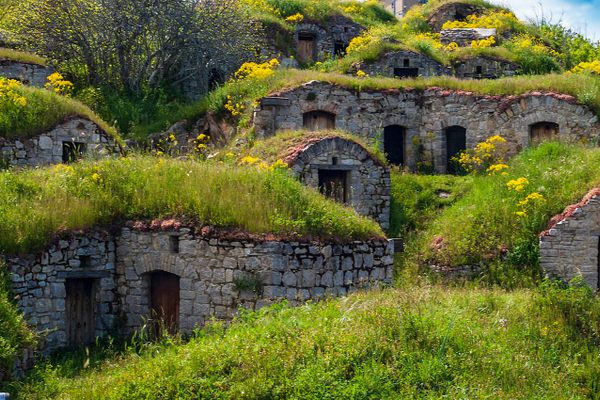Italian Olive Oil Is Facing a Perfect Storm of Climate and Pests
It may not be long before the country has to import some of its supply.

Olive oil’s history in Italy goes back over 4,000 years. Now, olive groves across the country are threatened—perhaps catastrophically—by a combination of unfortunate weather, a bacterial blight, and the uprooting of thousands of olive trees to make way for the Trans-Adriatic pipeline being constructed in Puglia, Italy’s main olive-producing region.
A cold snap in February 2018 kicked off the crisis, followed by intense summer heat, and ruinous rains that flooded groves in the fall. The usual resilience of the trees was compromised by these climate shocks, which left them more susceptible to infection by Xylella fastidiosa, a bacteria carried by the spittlebug, according to Riccardo Valentini, senior researcher at the Euro-Mediterranean Center on Climate Change. Intense weather has also been pummeling olive groves in Portugal and Greece, but Italy seems to have gotten the worst of it, with annual olive production reduced by over 50 percent, according to Valentini. Things shook out differently in Spain, which has a bumper crop this year.
Spain appears to be ahead in modernizing olive cultivation, with high-density plantations to increase yields. While Italy has begun adopting similar planting techniques, Valentini is cautious about overgeneralizing either problems or solutions. “While we’re experiencing global climate change, the manifestations … are very much regional,” he says.

The other end of the one-two punch is the X. fastidosa pathogen, which releases harmful toxins and clogs up the xylem, the tissue that transports water and nutrients up from the roots. The spittlebugs who tap leaves for water end up transporting the bacteria from plant to plant, which allows it to spread across acres rapidly. The disease first appeared in Italy in 2013, and likely arrived with ornamental plants from Costa Rica, says Rodrigo Krugner, a research entomologist with the U.S. Department of Agriculture who has been studying xylella in California, where it has infected grapevines and almond trees. Krugner is teaming up with Europeans to deal with the disease, and so far they have created a six-mile buffer zone around infected areas. While it continues to spread, xylella is still mainly confined to the tip of Italy’s bootheel in Puglia, though another strain of the disease has been observed in Tuscany.
The crisis has pushed Italian olive oil prices up more than 30 percent, and protests have ensued as farmers urge the government to respond. If the trend continues, Italy may have to start importing olive oil in the coming years, Valentini says. He has been urging investment in finding hardier cultivars among Italy’s olive groves, as well as studying the factors that contribute to climate change resistance—all while preserving what makes Italian olive production so unique. “For us, olive trees are important also for the landscape, not only for olive oil.” he says. “Personally, I think we should not change our cultural heritage and landscape too much.”
Gastro Obscura covers the world’s most wondrous food and drink.
Sign up for our regular newsletter.

































Follow us on Twitter to get the latest on the world's hidden wonders.
Like us on Facebook to get the latest on the world's hidden wonders.
Follow us on Twitter Like us on Facebook